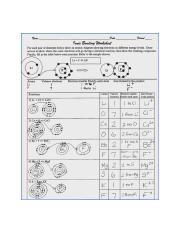

In agreement with our analysis using the Lewis formalism, water's shape is angular, or bent, with an H-O-H bond angle of 104.5°. The diagrams below represent the experimentally determined molecular shape. Experimental techniques such as X-ray crystallography that can locate the positions of the atoms in molecules reveal the shape of the water molecule. What we refer to as "molecular shape" is what we see when we look only at the atoms that make up the molecule. As we'll show below, we can also use the Lewis structure to analyze whether the water molecule has polarity. Since the lone pairs spread negative charge over a greater volume than bonding pairs, electrostatic repulsion drives the bonding pairs a little closer together, so the actual bond angle should be a little less than 109.5°. The main conclusion that follows is that the arrangement of atoms in the H-O-H molecule is not linear, but bent, with the bond angle expected to be close to the tetrahedral value, 109.5°. Application of VSEPR theory to this configuration leads to the conclusion that these four electron domains are - to a first approximation - arrayed about the central oxygen in a tetrahedral pattern. The octet about the central oxygen can be viewed as being made up of four electron domains, two bonding pairs and two non-bonding "lone pairs". With a valid Lewis structure, we can infer molecular geometry of the water molecule. In panel (c), we have applied the symbolic convention that two shared electrons that form a chemical bond between atoms can be represented by a line. Hydrogen, as a period 1 element, can only accommodate two electrons in its valence
#ION BONDING CAPACITY HOW TO#
Panel (b) shows how to put the three atoms together to form a complete octet for the central The Lewis symbols for the elementsĪre shown in panel (a) below: Oxygen has six valence electrons, and hydrogen only one. To start with, let us generate a Lewis structure for the water molecule based on its molecularįormula, H 2 O. Upon the planetary environment permitting and sustaining the development of the biosphere. With the majority of the earth's surface covered with water, its properties have a huge impact Water is central to life and the biochemical processes taking place in living organisms. The gas, liquid, and solid phases - using a familiar and important example.Īnd is an effective catalyst for proton transfer reactions. It provides us with an opportunity to consider the properties of three phases of matter.

Water (H 2 O) is a familiar yet fascinating substance. Further implications of water as the biological solvent.


 0 kommentar(er)
0 kommentar(er)
